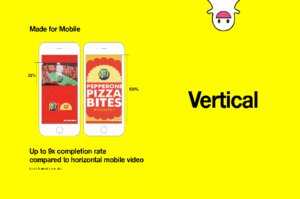Why Snapchat Is Hot, New Guide to Chat Apps, How HBR Draws Subscribers, Role of Original Illustrations, Media Metrics, Women in Media, TFP’s Infographic Pick of the Week, DPS 2015 Tip: Article Metadata
Welcome to Technology for Publishing’s roundup of news and tips for media industry pros! This week, we’re sharing stories about why publishers should be paying attention to Snapchat, the just released Tow Center Guide to Chat Apps, how Harvard Business Review brings value to subscribers while drawing in new readers, five publishers using original artwork and illustrations in their digital content, and more.
- Facebook’s not the only platform grabbing headlines in the publishing world lately. Snapchat is quickly moving up the hotness scale as well, ramping up its media partnerships and recently reporting 6 billion video views daily, up from 2 billion just six months ago. With that kind of momentum in mind, a Media Briefing post looks at reasons why the popular messaging app needs to be on publishers’ radar. For one, it has the fastest growing user base: According to GlobalWebIndex, it saw a 57% increase in users between Q1 and Q4 last year, a growth rate far outpacing Instagram, Pinterest, and Facebook Messenger, the report says. And among a number of other things, it offers “engagement to die for,” with 65% of Snapchat’s daily users contributing content. While the app is still considered a startup in development and may not be the right model for all publishers, the article notes those interested in capturing millennial audiences would do well to keep a close eye on it.
- A great resource to learn more about messaging platforms is the just published Tow Center Guide to Chat Apps, a hefty report that examines the role Snapchat, Kik, WhatsApp, and others will play in the future of digital journalism. Based on interviews and detailed case studies, it looks at both challenges and opportunities for news publishers, breaking out key observations based on current metrics and real-world applications. A must-read for all organizations looking to experiment with emerging content distribution models!
- For subscription-based publishers, the trick is to provide value to paying customers while drawing in new readers. Harvard Business Review is proving successful on both fronts: While its redesign last year offers registered users features like libraries where they can get charts and slide decks and save and organize articles, evergreen and how-to articles on HBR social channels are bringing in new subscribers—with numbers increasing 20% over the past year. Digiday reports that combined efforts have almost doubled traffic over the past year, with comScore showing 2.4 million monthly unique visitors in September. Other important milestones for HBR: 79% growth in traffic from social in the past year, now representing a third of its total traffic, with the number of people visiting the site at least three times a month jumping 30%, many of whom are likely to subscribe. “You can come to us through social once or twice by accident and not know where you landed, but if you come three times, we know you did it on purpose,” says HBR.org editor Katherine Bell in the report.
- Elsewhere, a Nieman Lab post looks at how some publishers are getting out of the stock photo rut by mixing in some original illustrations with their online stories. It asks five publishers how illustrations play into their content strategies and why they’re often a better choice over stock or product images, screenshots, and the like. At Pando, for example, editorial director Paul Carr says, “We wanted art on Pando to be just as good as the reporting and writing. In many cases the art does an even better job at summing up the story, and drawing in readers than the headline does.” And Fusion has maintained from its start that “the visual language was a key differentiation point, where we could set ourselves apart from other outlets,” notes art director Kent Hernandez, adding that stories often have different visual components based on social distribution. Check out the article for more insights from other publishers.
On the Technology for Publishing Blog
- See our latest Media Metrics roundup for reports on the wearables developer market, a surprising increase in print newspaper ad spending, Pew’s study on social media use over the past decade, ads in Facebook’s News Feed, and more.
- Also, this month’s Women in Media post covers Cory Haik’s role as the Washington Post’s executive director of new products, a look at the 40-year career of “Fresh Air” host Terry Gross, a whopping 51% pay gap between men and women in associate-level editorial jobs, “Girls” creator Lena Dunham’s partnerships with Hearst and BuzzFeed, and more.
- Marketers are loving paid social media advertising! See our Infographic Pick of the Week to find out how they’re targeting their content to social audiences.
- Article metadata is an important part of the Adobe Digital Publishing Solution workflow. In this week’s DPS 2015 Tip, Monica Murphy lists article metadata fields with a brief description of each.
Image: The Media Briefing
Check out our blog for highlights of interesting and noteworthy stories from the publishing world every Friday, and sign up for TFP’s This Week in Publishing newsletter. Think we missed something great? Let us know! Leave a comment below or drop us a note.
Posted by: Monica Sambataro



